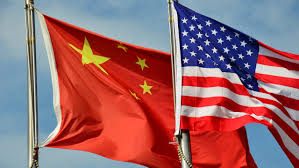
Breaking News
 FBI Deputy Director Dan Bongino Releases Statement After Mounting Pressure For Deep State Arrests
FBI Deputy Director Dan Bongino Releases Statement After Mounting Pressure For Deep State Arrests
 Joe Rogan Experience #2303 - Dave Smith & Douglas Murray
Joe Rogan Experience #2303 - Dave Smith & Douglas Murray
 Climate Change Myths Part 1: Polar Bears, Arctic Ice, and Food Shortages
Climate Change Myths Part 1: Polar Bears, Arctic Ice, and Food Shortages
 Neocons Defeated? Think Again!
Neocons Defeated? Think Again!
Top Tech News
 Kawasaki CORLEO Walks Like a Robot, Rides Like a Bike!
Kawasaki CORLEO Walks Like a Robot, Rides Like a Bike!
 World's Smallest Pacemaker is Made for Newborns, Activated by Light, and Requires No Surgery
World's Smallest Pacemaker is Made for Newborns, Activated by Light, and Requires No Surgery
 Barrel-rotor flying car prototype begins flight testing
Barrel-rotor flying car prototype begins flight testing
 Coin-sized nuclear 3V battery with 50-year lifespan enters mass production
Coin-sized nuclear 3V battery with 50-year lifespan enters mass production
 BREAKTHROUGH Testing Soon for Starship's Point-to-Point Flights: The Future of Transportation
BREAKTHROUGH Testing Soon for Starship's Point-to-Point Flights: The Future of Transportation
 Molten salt test loop to advance next-gen nuclear reactors
Molten salt test loop to advance next-gen nuclear reactors
 Quantum Teleportation Achieved Over Internet For The First Time
Quantum Teleportation Achieved Over Internet For The First Time
 Watch the Jetson Personal Air Vehicle take flight, then order your own
Watch the Jetson Personal Air Vehicle take flight, then order your own
 Microneedles extract harmful cells, deliver drugs into chronic wounds
Microneedles extract harmful cells, deliver drugs into chronic wounds
 SpaceX Gigabay Will Help Increase Starship Production to Goal of 365 Ships Per Year
SpaceX Gigabay Will Help Increase Starship Production to Goal of 365 Ships Per Year
The coming US-China financial divorce

The financial decoupling between the United States and China is no longer a distant threat. It is here, formalized, accelerating, and profoundly disruptive. For investors, understanding this new era is not optional; it's imperative.
The sweeping tariffs on Chinese imports, now codified into law, mark more than a trade skirmish. They signal a historic reordering of global capital flows, supply chains, and technological ecosystems.
This is not merely about economics. It is about economic power—and control. Investors must now adapt to a world in which the foundational rules of global commerce are being redrawn at speed and under pressure.
On April 2, President Trump declared Liberation Day, signing into law a sweeping universal 10% tariff on all imports, escalating to an extraordinary 60% on Chinese goods. These new levies come atop an already formidable 85% existing tariff wall, resulting in cumulative charges of 145% on Chinese exports to the US.
The market reaction was immediate: supply chains began to unspool, cost pressures reignited across industries, and Beijing launched the first salvos of retaliation, notably banning the export of critical minerals essential for American tech and aerospace sectors.
What is unfolding is not a tactical dispute, but a structural decoupling of the world's two largest economies. While the term "Cold War" is frequently overused, it is increasingly difficult to ignore the parallels. The long-standing belief that economic integration would serve as a bulwark against geopolitical conflict is being abandoned in real time.
What would a full-blown financial divorce look like?
First, capital flows will become increasingly politicized. Transactions between American and Chinese entities—once considered routine—will be subject to growing scrutiny and restriction. Dollar-denominated activities could be curtailed. US pension funds, university endowments, and index-linked ETFs may face outright bans or mounting political pressure to divest from Chinese assets.
This could trigger a wave of delistings from US exchanges, tighter reviews by the Committee on Foreign Investment in the United States (CFIUS), and outbound investment controls targeting key sectors. Already, Trump's advisors are sending clear signals: American capital should not be "funding China's rise."



